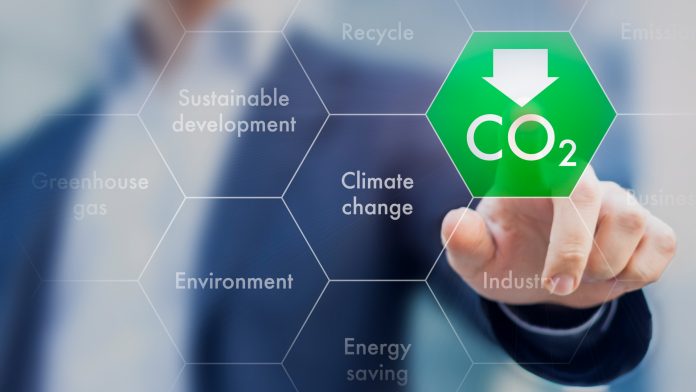Professor Enrico Giovannini, Founder and Director of the Italian Alliance for Sustainable Development (ASviS), explains why citizens are integral to Europe’s sustainable future.
Involving citizens in the sustainable development agenda is crucial; it is, after all, citizens who will be affected by the changes that will be made in the transition to a sustainable society, and it is their actions that will make such a transition possible.
Promoted by Cittadinanzattiva/Active Citizenship Network (ACN), the European Consumers Union (ECU), and the Italian Alliance for Sustainable Development (ASviS) The Inter-Institutional Group ‘SDGs for Well-Being and Consumers’ Protection’ is working to promote consumers’ rights and support the European Commission’s priorities as outlined in the European Green Deal.
ASviS was established in 2016 and its aim is to raise awareness on the parts of Italian society, economic stakeholders, and institutions about the importance of the 2030 Agenda for Sustainable Development, and to mobilise them in order to pursue the Sustainable Development Goals (SDGs). In partnership with ACN, The Innovation Platform’s International Editor, Clifford Holt, spoke to the organisation’s Founder and Director, Professor Enrico Giovannini, who was Chief Statistician at the OECD from 2001 to 2009 and Minister of Labour and Social Policies of the Italian Letta government, about the importance of both citizens and the right policy environment in achieving Europe’s sustainable future.
Could you begin by outlining the role of ASVIS? Why was the establishment of the Inter-Institutional Group thought to be necessary, and what role do you play in this initiative?
The Italian Alliance for Sustainable Development was established to foster the implementation of the 2030 Agenda in Italy. I was involved in the preparation of the 2030 Agenda by the then-UN Secretary General, Ban Ki Moon after I stepped down as the Italian Minister of Labour and Social Policies and I was able to return to the study of economics and the risks that the world would face by 2020-2030 in terms of a potential economic and social collapse.
Once the agenda was adopted by the UN General Assembly, I began to think about what more could be done, and I went on to come up with the idea of establishing what might be termed a ‘network of networks’, ASVIS. When we began, we included 60 organisations. This has now grown to almost 300, in addition to 250 associate organisations, meaning that we are the largest civil society network ever organised in Italy. What is more, there is no other network in the world that is as wide as ours, covering so many topics – from research to advocacy to information to policy advice.
Given our size and scope, we hope to be able to push Italy towards a more sustainable future – and this input is certainly required, given that we remain far from achieving the level of sustainability that we need to attain.
Regarding the 2030 Agenda and the efforts needed to achieve the set goals, are there any instances in Europe – and perhaps in individual Member States – where good progress is being made (or, on the contrary, where significant difficulties have been identified)? And how is your own country, Italy, faring in this regard?
To begin by considering the EU as a whole, it is important to highlight the fact that Europe is in fact the most sustainable area in the world. That being said, however, there is still a lot to be done even here, and this has become increasingly evident via the composite indicators of the 17 Sustainable Development Goals (SDGs) that we have developed, aggregating about 100 indicators produced by Eurostat and Istat (the Italian national institute of statistics). These indicators show that we are not yet on the right path, even though Europe is making progress in some areas. Indeed, they have also demonstrated that the situation is actually worsening in some areas, such as with regards to ecosystems.
With our indicator system, we compare different countries, too. This enables us to see how they have progressed from 2010 to 2018 (the 2019 data will be published soon) in terms of sustainable development (we have also investigated how the COVID-19 pandemic crisis affected the SDGs in 2020). And while we do not use this to produce rankings, the data clearly shows the inequalities across countries within the EU, with many countries performing very well in some areas, less well in others, or very badly in others still.
From this perspective, Italy is performing quite well in some areas, such as healthcare and sustainable food production, and also in terms of renewable energy use, where Italy is one of the best performers. In terms of social variables, however, for SG1 (no poverty) and SDG10 (reducing inequality within and among countries) and also in terms of employment, Italy is one of the worst performing countries.
The good news is that the EU, with the new European Commission led by Ursula von der Leyen, decided to put the 2030 Agenda at the core of all its policies. Therefore, all the communications and proposals coming out of the Commission in the last year can be seen and read in the context of the 2030 Agenda. Furthermore, the Next Generation EU programme is very clearly a step in the right direction.
I am, therefore, optimistic that European policies will continue to be increasingly oriented towards a sustainable future, despite the fact that the COVID-19 pandemic is making both Europe and the wider world take some steps backwards in several respects.
The European Green Deal and the Recovery Funds etc. perhaps have the potential to reverse some of the trends that are seeing a move away from more sustainable solutions. How would you like to see such instruments being properly utilised?
One of the key lessons that the 2030 Agenda tries to teach is that we need an integrated system of policies; we should not simply look at one dimension without considering the impact that any given policy could have on the other dimensions, too. In light of this, the Organisation for Economic Co-operation and Development (OECD) has developed a framework to foster policy coherence for sustainable development, which means that we need to look at all dimensions simultaneously.

Through the European Green Deal, it is hoped that Europe’s competitiveness will be boosted and, moreover, that new jobs will be created within the limits of what our planet is able to bear. However, for that to be achieved we need to stimulate innovation and we need to improve public administrations.
In many ways, we need to push our capitalistic system to evolve towards a new form of capitalism. Over the last 40 years, we have been dominated by a neoliberalism which has, of course, produced many positive outcomes; but it has become clear that it is inadequate in terms of addressing the two key problems of the 21st century – the fact that we have come crashing against the limits of our planet, and the growing inequalities that now exist around the word.
The Green Deal, therefore, is a very good step in the right direction, especially in terms of energy use and the transition to renewables, and also in terms of the ecological transition of production processes. But we should not forget the other elements of that, too. And much of this progress has been a result of including the concept of resilience in European policy scenarios – something I have worked on for years within the European Commission and Parliament. This is very important because we know that shocks such as that which have resulted from the coronavirus pandemic will occur quite often in the future, and so it is not enough to simply transform our economy by ‘greening’ it; we also need to create conditions in our socio-economic system so that it is much more resilient to future shocks (with climate change being the first thing that needs to be taken into account).
Do you think that the measures to fight the current COVID-19 crisis, such as Next Generation EU, are going in the right direction to achieve sustainable change?
The European Commission’s recommendations on how to compose a recovery and resilience plan clearly identifies the three main pillars: ecological transition, digital transition, and the fight against inequalities.
This is designed to make Europe more sustainable, resilient, and fairer, and it is now up to Member States to translate these into reliable and effective plans. However, it is also up to the European Commission to try to put together this quite diverse range of plans in order to foster synergies. For example, if Europe wants to pursue green hydrogen but there is nothing in place in Member States to facilitate this, then it will not work. This is therefore an incredibly difficult exercise in terms of coherence, but it is something that absolutely must be done at the European level in order to ensure success.
From your point of view, what should the institutions at both the European and national levels do in order to ensure the leadership of citizens and communities towards a more sustainable future, as hypothesised by the 2030 Agenda?
This is especially important for Europe, where the tradition of engaging local communities is quite strong compared to other countries. It is therefore good to see that the Next Generation EU funds are integrated with the classical European policy funds, such as the Cohesion Policy. This is important not only from a policy coherence point of view but also because the translation of the plans into actions requires the engagement of local communities.
For example, if Italy wants to achieve a 55% reduction of greenhouse emissions by 2030, then the space currently devoted to wind and solar plants must be multiplied by three or four times. This is a significant area and planning where those new plants are to be located simply cannot be done without engaging local communities.
The so-called ‘territorial dimension’ of the 2030 Agenda is thus absolutely central, and that is why, in December last year, we published the first territorial review of Italy, going down to municipality level in terms of the 17 Sustainable Development Goals.
How would you like to see recovery and resilience being better planned for at the Member State level?
There is a real need for policy makers across Europe to embrace the 2030 Agenda and to properly include this in their recovery and resilience plans. In the Spanish plan, for instance, the 2030 Agenda is mentioned as early as the sixth line of the introduction, and within the report, it is referred to throughout (indeed, the Spanish ministers are also obliged to wear a pin of the 2030 Agenda when they attend meetings). In the French plan, however, the opposite is true: the plan may be in line with the 2030 Agenda, but the Agenda per se is not quoted at all.
The Italian plan quotes the Agenda – and that is something we have worked hard to achieve – but they are experiencing some issues in being able to show the European Commission how some of their individual projects fit into the overall picture.
This, of course, demonstrates that the 2030 Agenda can be used in different ways, but unless countries equip themselves with the necessary tools to ensure policy coherence, it is going to be very difficult for them to make progress towards achieving the Sustainable Development Goals.
Professor Enrico Giovannini
Founder and Director
Italian Alliance for Sustainable Development (ASviS) and newly nominated Minister of Infrastructure and Transport
comunicazione@asvis.it
Tweet @ASviSItalia
Please note, this article will also appear in the fifth edition of our quarterly publication.





